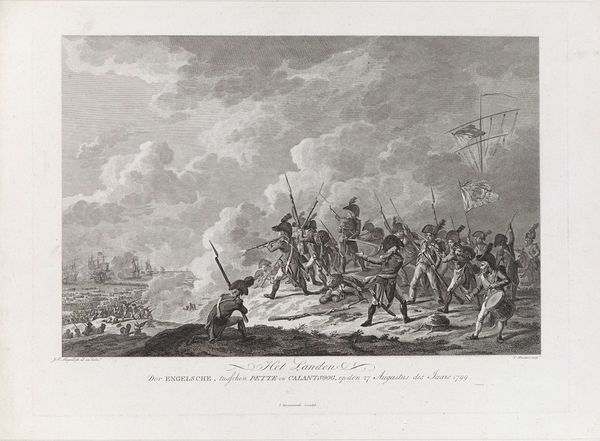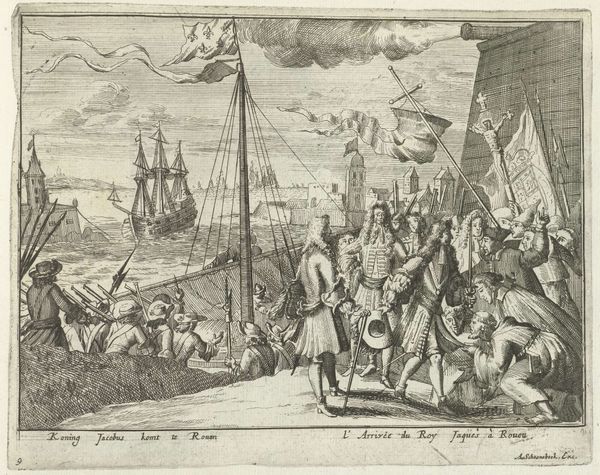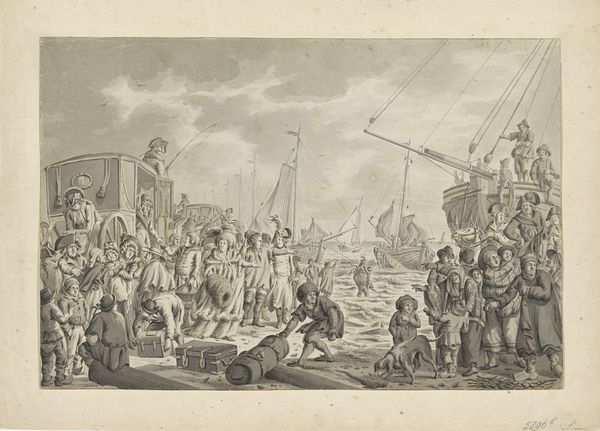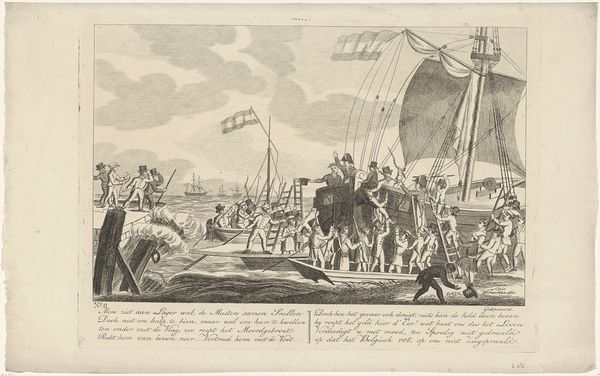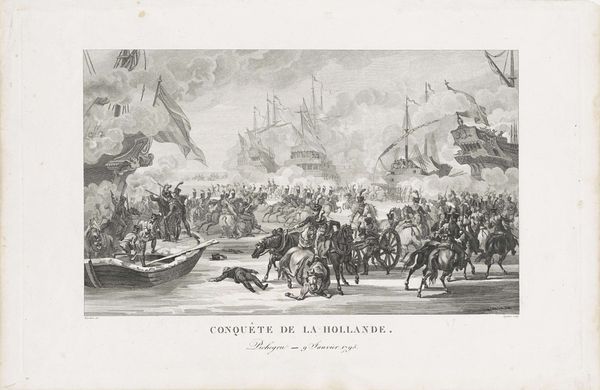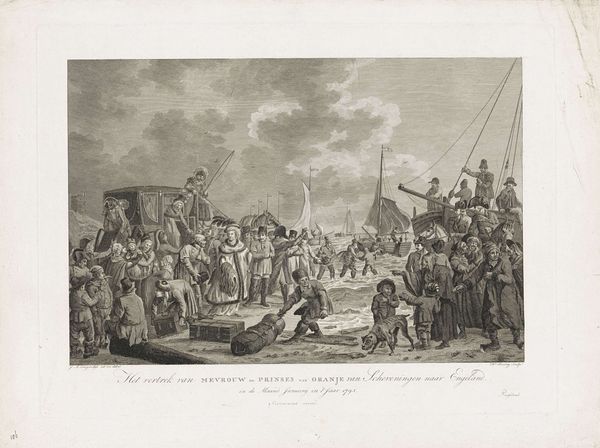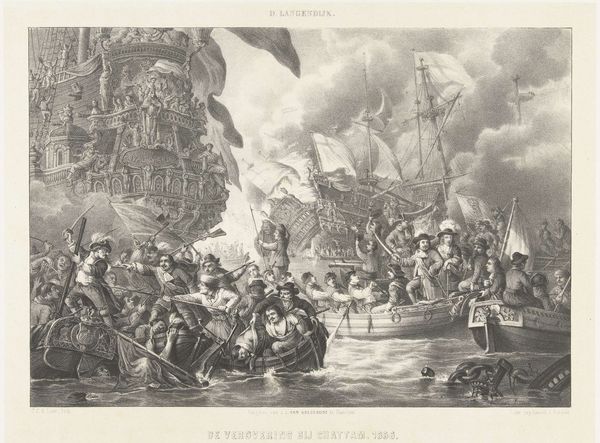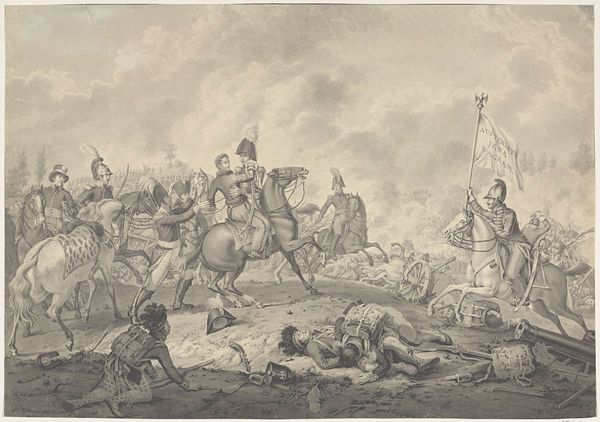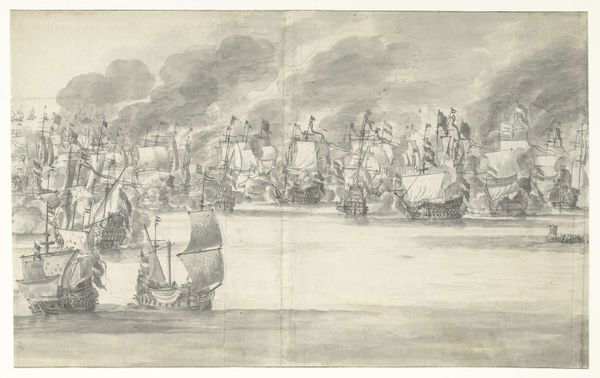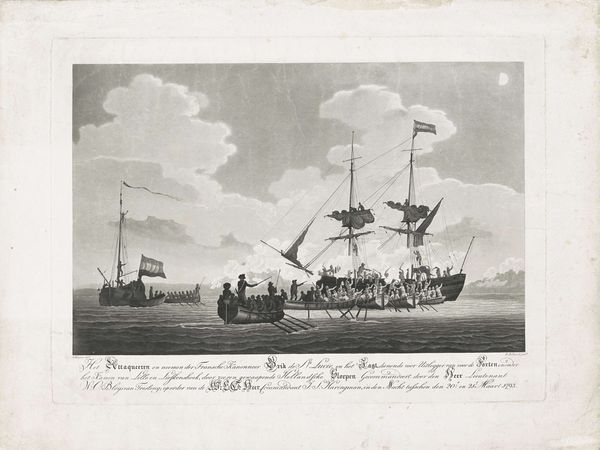
Heldenmoed van generaal Grouchy in de slag bij Waver, 1815 1817 - 1819
0:00
0:00
hippolytebellange
Rijksmuseum
print, etching, engraving
#
narrative-art
# print
#
etching
#
landscape
#
group-portraits
#
romanticism
#
history-painting
#
engraving
Dimensions: height 330 mm, width 415 mm
Copyright: Rijks Museum: Open Domain
Curator: Here we have Hippolyte Bellangé's "Heldenmoed van generaal Grouchy in de slag bij Waver, 1815," a print combining etching and engraving, made between 1817 and 1819. What are your initial impressions? Editor: Chaos. That’s the first word that comes to mind. It’s all frenetic energy and angled bodies. You can almost hear the shouts and the gunfire even in this static scene. The lighting seems almost…theatrical? Curator: Indeed. Bellangé, working in the Romantic style, captures a key historical narrative moment rife with the ideological tensions of the post-Napoleonic era. Consider the figure of Grouchy, elevated on horseback: how does this imagery intersect with the socio-political context of military leadership and national identity? Editor: The horse itself is an interesting symbol. Usually, it’s about power, nobility, the higher calling. But this one seems almost…frightened. Its stance is tense, unrooted, as if mirroring the uncertainty of the battle itself. And what about the drum in the foreground? Curator: A potent reminder of loss, surely. Its presence on the ground near fallen soldiers introduces themes of mortality and the fragility of human life amidst conflict. It adds a layer of criticism of war. The drum as a pre-battle symbol now defeated along with the bodies brings forth the emotional burden. Editor: The positioning of Grouchy seems key too. He’s directing the action but separated, almost floating above the fray. Is he meant to be the ideal leader or a figure disconnected from the reality faced by his men? Curator: A provocative question. Perhaps Bellangé aims for ambiguity, leaving viewers to grapple with the complexities of heroism, sacrifice, and leadership during a period of intense social and political upheaval. Considering its function as a print intended for wider distribution, one wonders about its role in shaping public opinion regarding Napoleon's legacy. Editor: Absolutely. This print is not just a depiction of a battle. It serves as a poignant visual document rife with the burdens of war and glory of its leaders, all while reminding of what lies below both: common suffering. Curator: A sobering thought to leave us with as we move to the next work. Thank you for your insights.
Comments
No comments
Be the first to comment and join the conversation on the ultimate creative platform.
